Avocet & Stilt Week
Stilt Species Spotlight: Learn About the World's 6 Stilts
There are six species of stilt in the world. Here at Birdorable, as part of Avocet & Stilt Week, we're introducing four new to our family. These will be joining the two existing Birdorable stilts -- and completing the family!
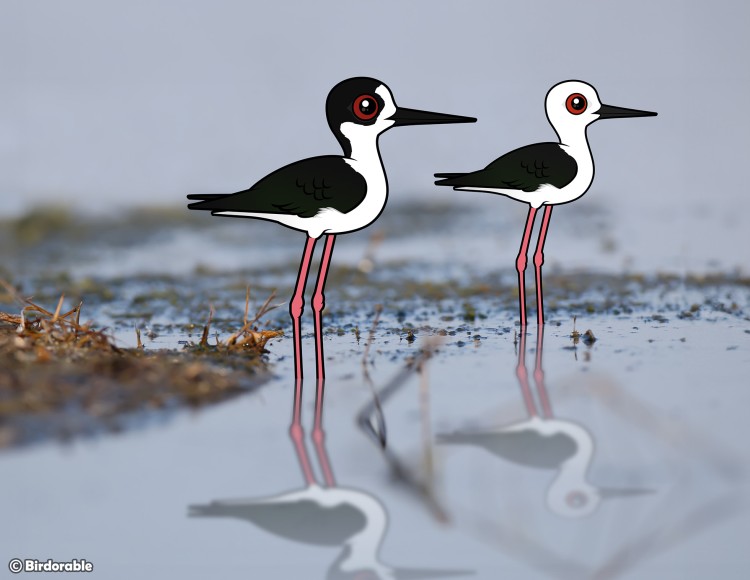
Black-winged Stilts in west Africa
Black-winged Stilt (Himantopus himantopus)
The Black-winged Stilt is one of the most widespread and easily recognized stilt species, found across Europe, Asia, Africa, and Australia. This bird is known for its striking black-and-white plumage, long pink legs, and slender black bill. Preferring shallow wetlands, such as marshes, estuaries, and salt pans, the Black-winged Stilt feeds by wading through the water and using its long bill to probe for insects, small crustaceans, and other invertebrates. Its long legs allow it to forage in deeper waters than many other wading birds, giving it access to a unique range of food sources. The Black-winged Stilt joined Birdorable in August 2010.
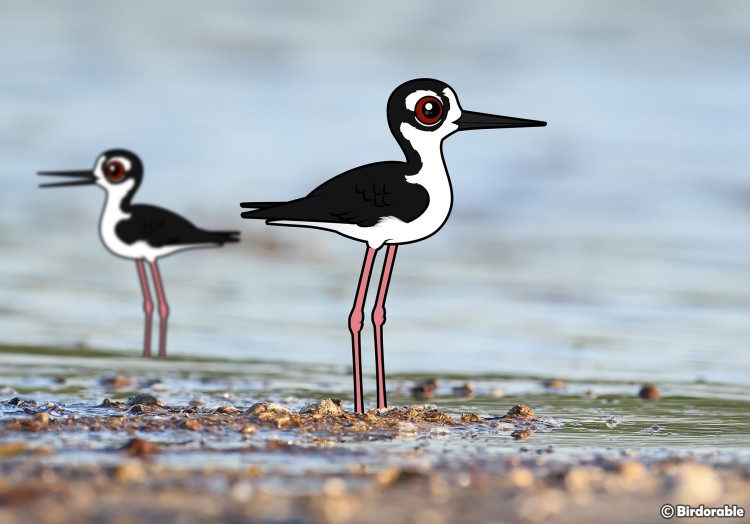
Black-necked Stilt in southern Texas
Black-necked Stilt (Himantopus mexicanus)
The Black-necked Stilt is native to the Americas, with populations ranging from the United States to South America. This species is similar in appearance to the Black-winged Stilt but is distinguished by its entirely black neck and back, contrasting with its white underparts. Found in coastal marshes, ponds, and shallow lakes, the Black-necked Stilt feeds primarily on aquatic invertebrates and small fish. It’s particularly known for its defensive behavior during the breeding season, often engaging in aggressive displays to protect its nest from potential predators. The Black-necked Stilt joined Birdorable in June 2010.
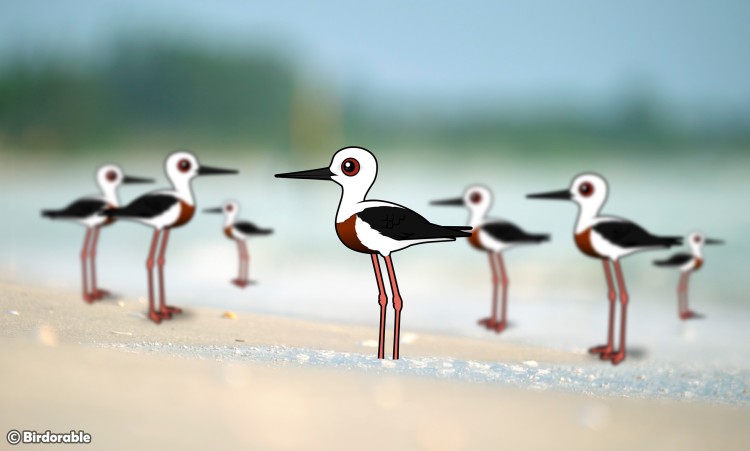
Banded Stilts in southern Australia
Banded Stilt (Cladorhynchus leucocephalus)
The Banded Stilt is a distinctive stilt species native to Australia. It is easily recognized by the bold chestnut band across its otherwise white body, which is most prominent during the breeding season. The Banded Stilt prefers ephemeral salt lakes and other shallow inland wetlands, where it feeds on brine shrimp and other small invertebrates. This species is nomadic, often moving great distances to find suitable habitats, especially after heavy rains create temporary wetlands in Australia’s arid interior. The Banded Stilt joined Birdorable earlier this Avocet & Stilt Week.
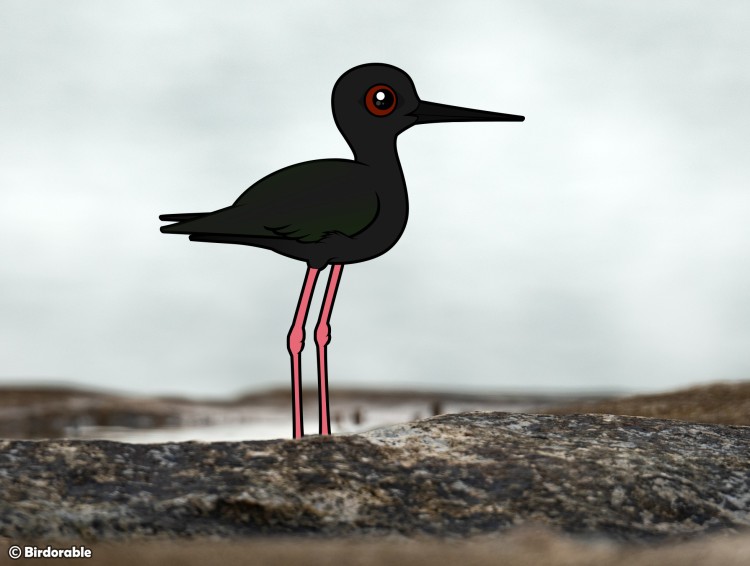
Black Stilt in New Zealand
Black Stilt (Himantopus novaezelandiae)
The Black Stilt, also known as the Kakī, is one of the rarest and most endangered wading birds in the world, endemic to New Zealand. This bird is entirely black, a unique feature among stilts, making it easily distinguishable from other species. The Black Stilt inhabits braided riverbeds and shallow wetlands, where it feeds on insects, worms, and small fish. Conservation efforts are critical for this species, as habitat loss and introduced predators have severely reduced its population. The Black Stilt joined Birdorable earlier this Avocet & Stilt Week.
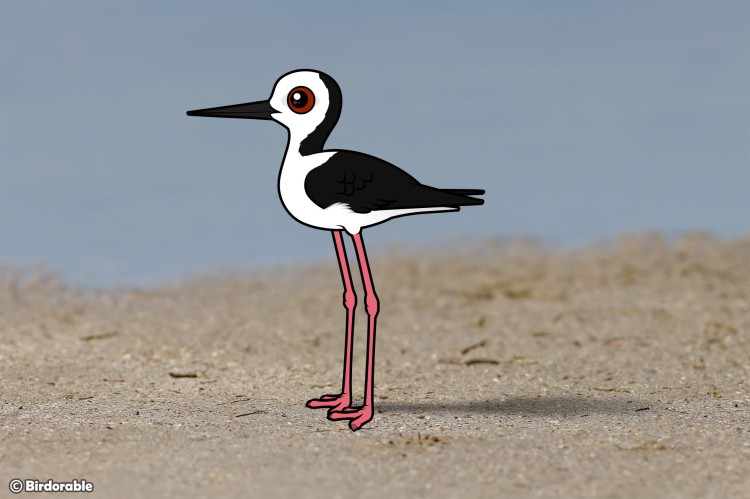
Pied Stilt in Australia
Pied Stilt (Himantopus leucocephalus)
The Pied Stilt, also known as the White-headed Stilt, is found in Australasia and Southeast Asia. It has a similar appearance to the Black-winged Stilt but is distinguished by its white head and black back. This species frequents a variety of wetlands, including estuaries, lagoons, and rice paddies. The Pied Stilt is highly adaptable and is often seen feeding in both freshwater and saltwater environments, using its long legs and bill to hunt for invertebrates in shallow water. The Pied Stilt joined Birdorable earlier this Avocet & Stilt Week.
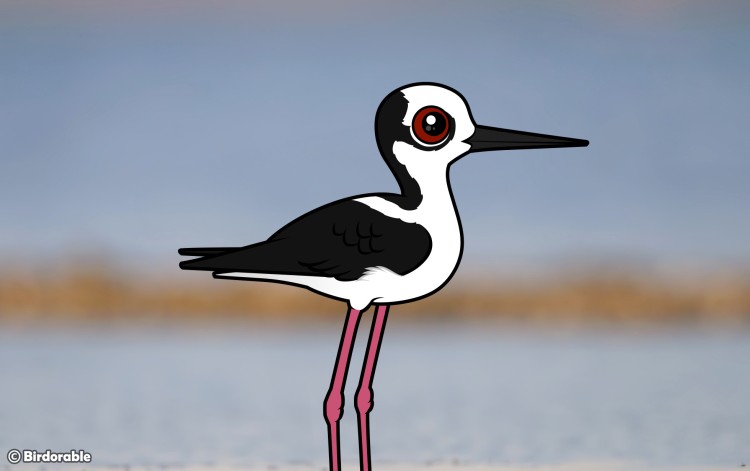
White-backed Stilt in northern Brazil
White-backed Stilt (Himantopus melanurus)
The White-backed Stilt is a striking stilt species native to South America, particularly in Argentina, Chile, and Brazil. It resembles the Black-necked Stilt but has a distinctive white patch on its back, giving it its name. The White-backed Stilt is commonly found in shallow wetlands, where it forages for small invertebrates, insects, and crustaceans. This bird is also known for its strong social behavior, often nesting in colonies and displaying coordinated defensive tactics against predators. The White-backed Stilt joined Birdorable earlier this Avocet & Stilt Week.





















Comments
Leave a comment
Thank you!